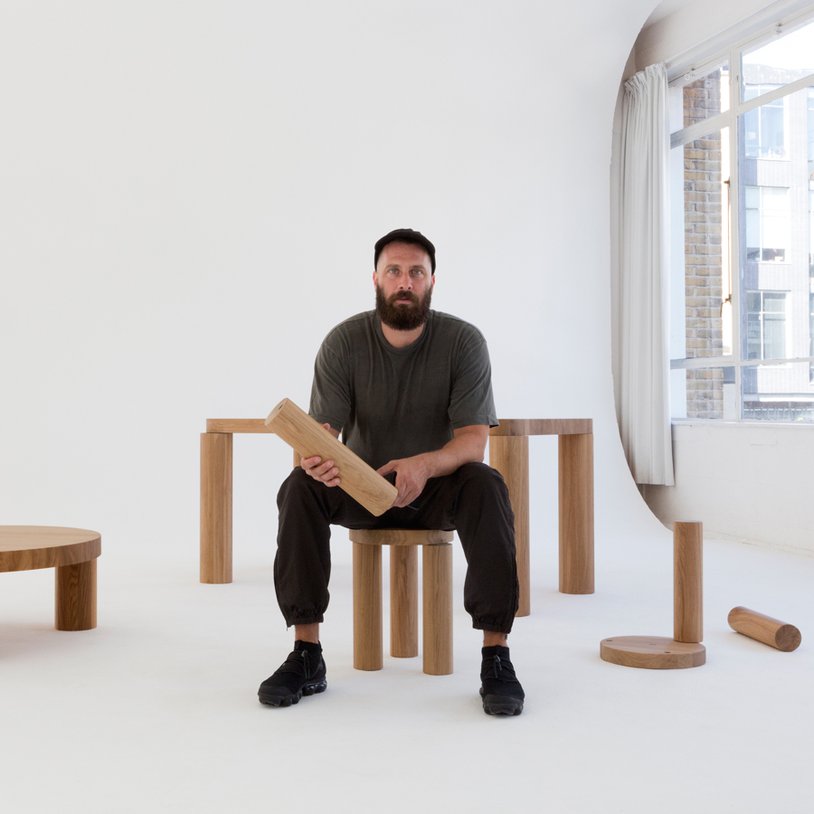Philippe Malouin Interview

Your latest product for Resident is the Offset Dining Table, which joins the already popular Offset Coffee Table and Stool.
Where did the original inspiration for this Offset Range come from?
I am a big fan of simple products that showcase a certain imperfection whilst still being industrially perfect. Achieving this idea can be challenging. The Offset products came as an accident while trying to align a base to a top that we had made in the studio: the alignment was never perfect. So I decided to go with this idea of offsetting the alignment, and this is how the offset products were born. This was the original idea, which lead to the beginning of the design process, the rest was a game of proportion instigation.
The Dining Table carries through the same bulky proportions as the Coffee table (65mm thick top, with 150mm diameter legs), all expressed in solid Oak. How much does the table weigh?
At 1600 x 800 the table weighs 115kg, but we can make it up to 2800 x 1200, in which case it weighs around 200kg. At this size the extraordinary volume of material is self-sustaining, so can hold its own weight. There is no need for beam supports or metal inserts. This table is a sight to behold!
Do you think that in many ways this piece represents the value linked to the weight of an object?
Sure, solid is worth something. When something is solid it can withstand a lot of abuse, so it can last for generations and be many times more sustainable. We pursue this in everything that we do - products made to last.
As you have said, you are a big fan of simple products, and this theme runs through much of your work. How do you justify this, and how do you restrain yourself from over-designing?
My usual approach to designing something is to think of a characteristic that will render the item different than the others. But then it is about making sure that the product is as simple as possible (simple in production, assembly and aesthetics). Once you have the general shape and idea in place, you need to reduce as much possible to have “as little design as possible, Dieter Rams”
You’ve just completed a fantastic 10 year exhibition at Villa Noailles in the South of France. I guess as a designer you are always so future focused, working on the next thing. What was it like to look back?
I can’t believe that I have been working in the field for 10 years already. It all went so fast. I never really focused on my work as a whole. I’m only ever focused on the next project, so it was a fantastic experience to try and explain to people my practice, how it has evolved, what we thought was important over the years, and figuring out if we have a “fill rouge” throughout my work. With the distance, I can now see that we do - the work is coherent as a whole, and I’m proud of that.
You certainly have come a long way in 10 years; I wonder what is the main difference between the beginning, and now?
The brands we are in contact with now are much bigger. In the beginning, we were in my studio with cheap power tools, knocking up badly made prototypes, and we managed to get the attention of clients all around the world. It feels like now we have the possibilities to produce more challenging work because the brands we collaborate with have giant R+D departments. This allows us to think outside the box and delve deeper into the possibilities of material and process. It is a fantastic situation.